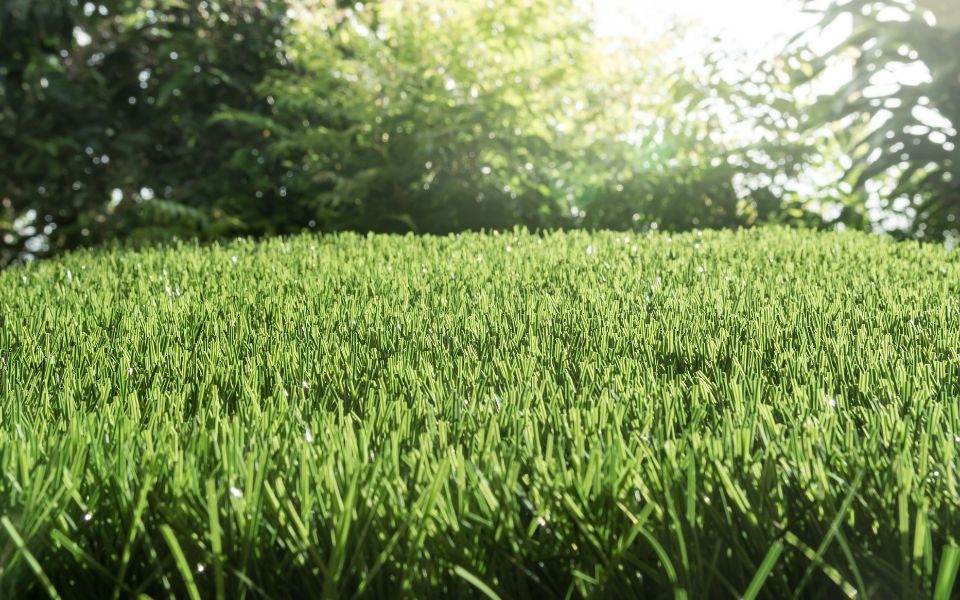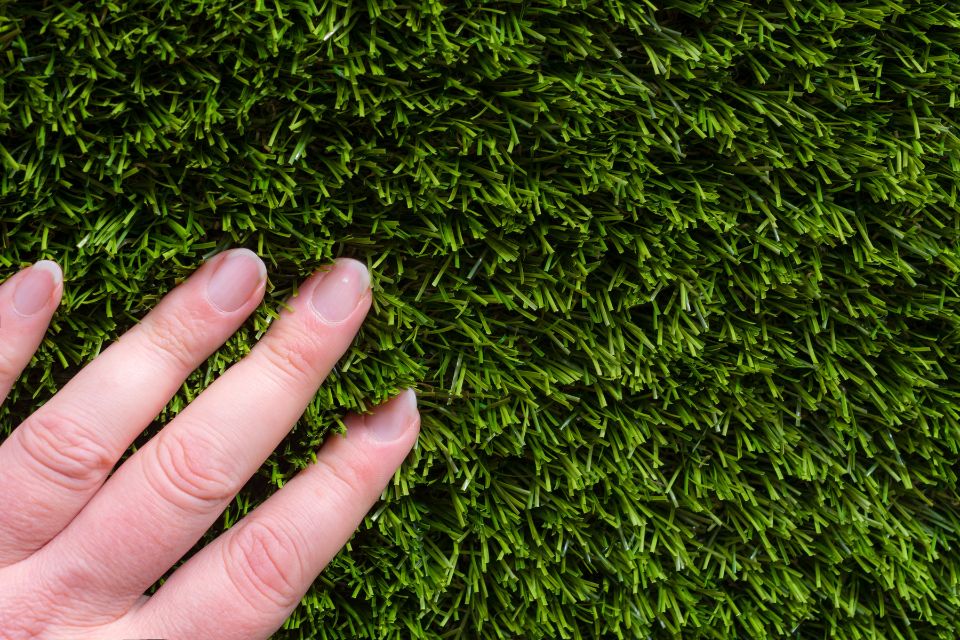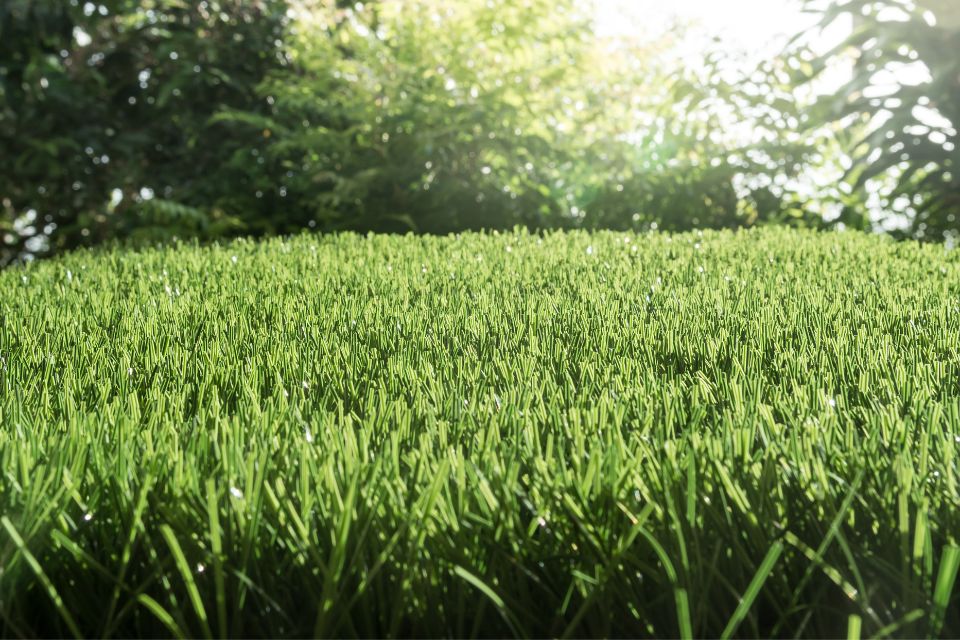
Will Installing Artificial Grass Improve Drainage?
Will installing artificial grass improve drainage? Yes, installing artificial grass can improve drainage by providing a permeable surface that allows water to drain through efficiently. The type of sub-base use during installation can also make a significant difference in helping to improve drainage issues in a garden.
Artificial grass has become a popular landscaping option for homeowners seeking a low-maintenance alternative to natural grass. While artificial turf offers numerous benefits, including reduced water consumption and minimal upkeep, some may wonder if it can also improve drainage. In this comprehensive guide, we’ll explore the relationship between artificial grass installation and drainage, addressing common questions and providing valuable insights for homeowners considering this landscaping option.
Understanding Drainage with Artificial Grass
Before delving into whether installing artificial grass can improve drainage, it’s essential to understand how drainage works with synthetic turf.
1. Drainage Backing
Most artificial grass products feature a perforated backing that allows water to drain through to the underlying surface. This drainage system helps prevent water from pooling on the surface and promotes efficient water runoff.
ARTTRAGrass® officially launched the EcoGrass Artificial earlier this year. With a fivefold water drainage speed and robust Turflock system, this 100% recyclable faux turf drains five time faster than conventional artificial lawn, and it is ideal for both residential and commercial gardens.
2. Infill Materials
Infill materials such as silica sand or rubber granules are often used to enhance the stability and drainage of artificial grass. These infill materials help distribute water evenly across the surface and improve overall drainage performance.
3. Base Preparation
Proper preparation of the base beneath the artificial grass is crucial for ensuring adequate drainage. A well-prepared base with appropriate slope and drainage materials can prevent water from accumulating on the surface and promote efficient water drainage.

How Artificial Grass Can Improve Drainage
While natural grass absorbs water into the soil, artificial grass relies on a different drainage mechanism. Here’s how installing artificial grass can contribute to improved drainage:
1. Permeable Surface
Artificial grass features a permeable surface that allows water to drain through to the underlying soil or drainage system. Unlike natural grass, which can become compacted over time, artificial turf maintains its permeability, ensuring consistent drainage performance.
2. Enhanced Drainage System
Many artificial grass products are designed with an advanced drainage system that efficiently channels water away from the surface. Combined with proper base preparation and infill materials, this drainage system helps prevent waterlogging and promotes optimal drainage even during heavy rainfall.
3. Reduced Water Runoff
Unlike hard surfaces such as porcelain paving or concrete pavement, artificial grass absorbs water and allows it to gradually seep into the ground. This reduces the risk of excessive water runoff, which can contribute to soil erosion and water pollution.
Types of Sub-base Used for Artificial Grass
The sub-base for artificial grass plays a crucial role in supporting the turf, promoting proper drainage, and ensuring long-term durability. There are several types of sub-base materials commonly used in artificial grass installations, each offering unique properties and benefits:
1. Aggregate Sub-Base:
Aggregate sub-base, often composed of crushed stone, gravel, or rock, is a popular choice for artificial grass installations. It provides excellent drainage capabilities, allowing water to flow through and away from the surface efficiently. Aggregate sub-base is also stable and durable, providing a solid foundation for the artificial turf. MOT Type 1 with a topping of Sharp sand is a combination for installations in the UK.
2. Decomposed Granite:
Decomposed granite is a natural, finely crushed rock material that offers good drainage properties and compacts well to create a stable base for artificial grass. It provides adequate support for the turf while allowing water to permeate through the surface, reducing the risk of water pooling or flooding. This is often called Granite dust or Grano dust by most tradesmen.
3. Concrete Sub-Base:
Concrete sub-base consists of a layer of compacted concrete or cement mixture, providing a solid and stable foundation for artificial grass. While concrete offers excellent support and durability, it may not provide as much drainage as other materials. Proper grading and the addition of drainage channels or perforations can help mitigate drainage issues with concrete sub-bases.
4. Permeable Paving:
Permeable paving systems, such as permeable interlocking concrete pavers (PICP) or porous asphalt, are designed to allow water to infiltrate through the surface and into the underlying soil. These systems offer good drainage capabilities and can be an eco-friendly option for artificial grass sub-bases. Permeable paving helps reduce stormwater runoff and replenish groundwater levels while providing a stable base for the turf.
5. Geo-textile Membrane:
We use geo-textile membrane, often made of woven or non-woven synthetic materials, as a separation layer between the sub-base and our artificial grass. While not a structural sub-base material, a geo-textile membrane helps prevent the migration of fine particles from the sub-base into the turf, maintaining proper drainage and stability over time. It also helps prevent weeds from coming through.
6. Rubber Shock Pad:
A rubber shock pad, made from recycled rubber materials, can be installed beneath the artificial grass to provide cushioning and shock absorption. While primarily used for sports fields and kids playgrounds, a rubber shock pad can also contribute to drainage by allowing water to permeate through the surface and into the underlying sub-base.
7. Composite Drainage Board:
Composite drainage boards consist of a series of interconnected channels or dimples that allow water to flow freely through the sub-base. These boards help distribute water evenly and prevent waterlogging beneath the artificial grass, improving overall drainage performance.
Choosing the right sub-base material for your artificial grass installation depends on factors such as local climate, soil conditions, intended use of the area, and budget considerations. As professional artificial grass installers based in Milton Keynes, we have installed synthetic turf all over the city, including Olney and Newport Pagnell, and clay is one of the main issues in Milton Keynes when it comes to drainage issues. ARTTRAGrass MK can help you select the most suitable sub-base material for your specific project requirements.

FAQs: Will Installing Artificial Grass Improve Drainage?
1. Will installing artificial grass improve drainage?
Yes, installing artificial grass can improve drainage by providing a permeable surface that allows water to drain through efficiently. Combined with proper base preparation and/or infill materials, artificial grass can help prevent water pooling and promote optimal drainage.
2. How does artificial grass compare to natural grass in terms of drainage?
Artificial grass typically offers better drainage than natural grass, especially in areas with heavy rainfall or poor soil drainage. Unlike natural grass, which can become waterlogged and muddy, fake turf maintains consistent drainage performance, ensuring a dry and usable surface.
3. Can artificial grass be installed on sloped surfaces?
Yes, artificial grass can be installed on sloped surfaces with proper base preparation and anchoring techniques. The slope of the surface should be taken into account during installation to ensure effective drainage away from the area.
4. Will infill materials improve drainage?
Yes, infill materials such as silica sand or rubber granules can improve drainage by enhancing the stability and permeability of the artificial grass. The infill materials help distribute water evenly across the surface and prevent water pooling.
5. How long does it take for water to drain through artificial grass?
The time it takes for water to drain through artificial grass can vary depending on factors such as the type of infill materials used, the slope of the surface, and the intensity of rainfall. In general, artificial grass offers rapid drainage, with water typically draining within minutes to hours after precipitation.
6. Will installing artificial grass reduce the risk of flooding in my yard?
Yes, installing artificial grass can help reduce the risk of flooding in your yard by providing a permeable surface that allows water to drain efficiently. Combined with proper landscaping and drainage solutions, artificial grass can contribute to a more flood-resistant outdoor environment.
7. Can artificial grass be installed over existing surfaces such as concrete or asphalt?
Yes, artificial grass can be installed over existing surfaces such as concrete or asphalt with proper preparation and installation techniques. However, it’s essential to ensure adequate drainage to prevent water from pooling on the surface.
8. Will installing artificial grass increase the value of my property?
While installing artificial grass can enhance the aesthetics and functionality of your outdoor space, its impact on property value can vary depending on factors such as location and overall landscaping quality. However, a well-maintained artificial grass lawn can improve curb appeal and make your property more attractive to potential buyers.
9. Can artificial grass be installed in areas with heavy rainfall?
Yes, artificial grass can be installed in areas with heavy rainfall, provided that proper drainage solutions are implemented during installation. Techniques such as incorporating drainage channels or installing a perforated base can help mitigate drainage issues and ensure the longevity of the artificial turf.
10. Is artificial grass environmentally friendly?
Artificial grass offers several environmental benefits, including reduced water consumption, minimal use of pesticides and fertilizers, and decreased reliance on lawnmowers and other maintenance equipment. Additionally, we can install the ARTTRAGrass® EcoGrass which is made of 100% thermoplastic material, the entire grass turf can now be recycled, further reducing their environmental impact.
An effective way to improve drainage
Installing artificial grass can be an effective way to improve drainage in outdoor spaces while enjoying the benefits of low maintenance and all year round greenery. With its permeable backing, built-in drainage system, and minimal maintenance requirements, artificial grass offers a practical solution for preventing water pooling and waterlogging, especially in areas prone to heavy rainfall. By promoting efficient water infiltration and maintaining consistent drainage performance, artificial grass can create a dry and usable outdoor space that enhances the overall aesthetics and functionality of your property. Whether you’re looking to upgrade your garden, backyard, or commercial landscape, artificial grass provides a durable and sustainable solution for improving drainage and creating an inviting outdoor environment for years to come.
If you are looking for experienced artificial grass fitters, do not hesitate to contact us at 0800 433 2353. Alternatively, you can contact us via email at enquiries@miltonkeynesartificialgrass.co.uk or click here. Our installation team cover the whole of Bedfordshire, Berkshire, Buckinghamshire, Cambridgeshire, Hertfordshire, Northamptonshire, Oxfordshire, and the London area.
